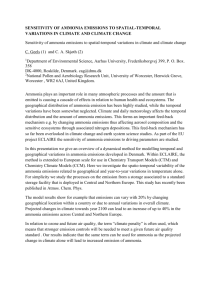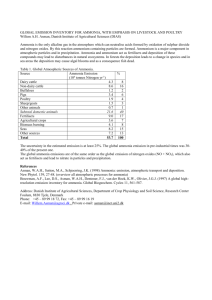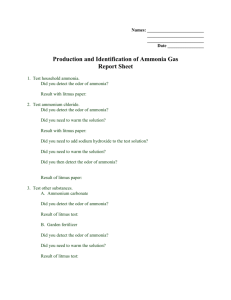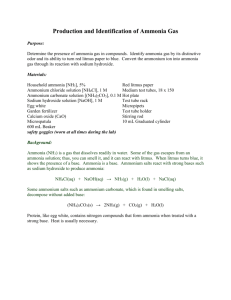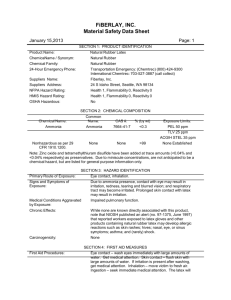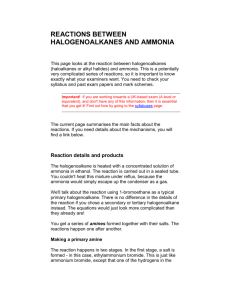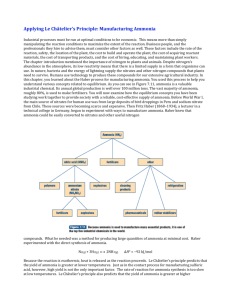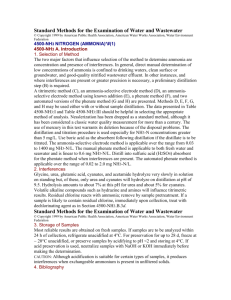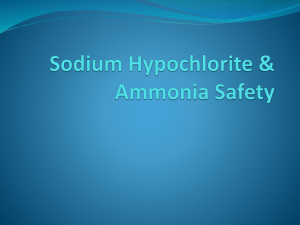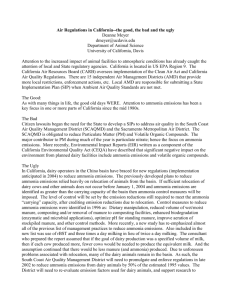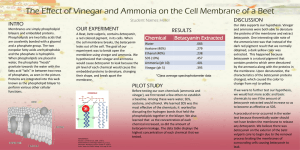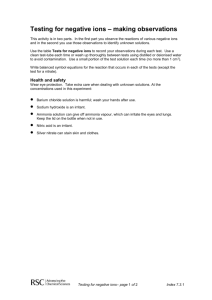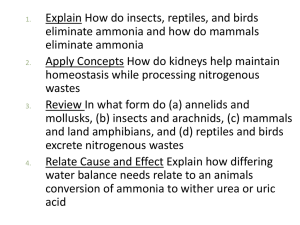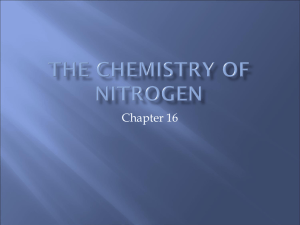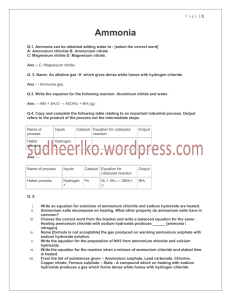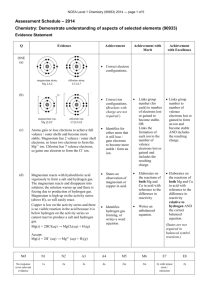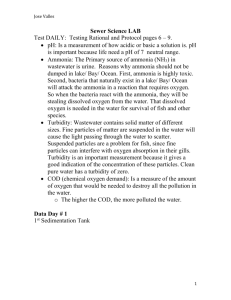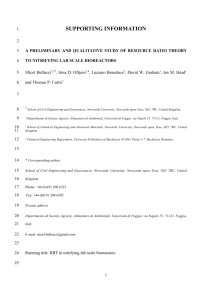AMMONIA AND ATMOSPHERIC CHEMISTRY
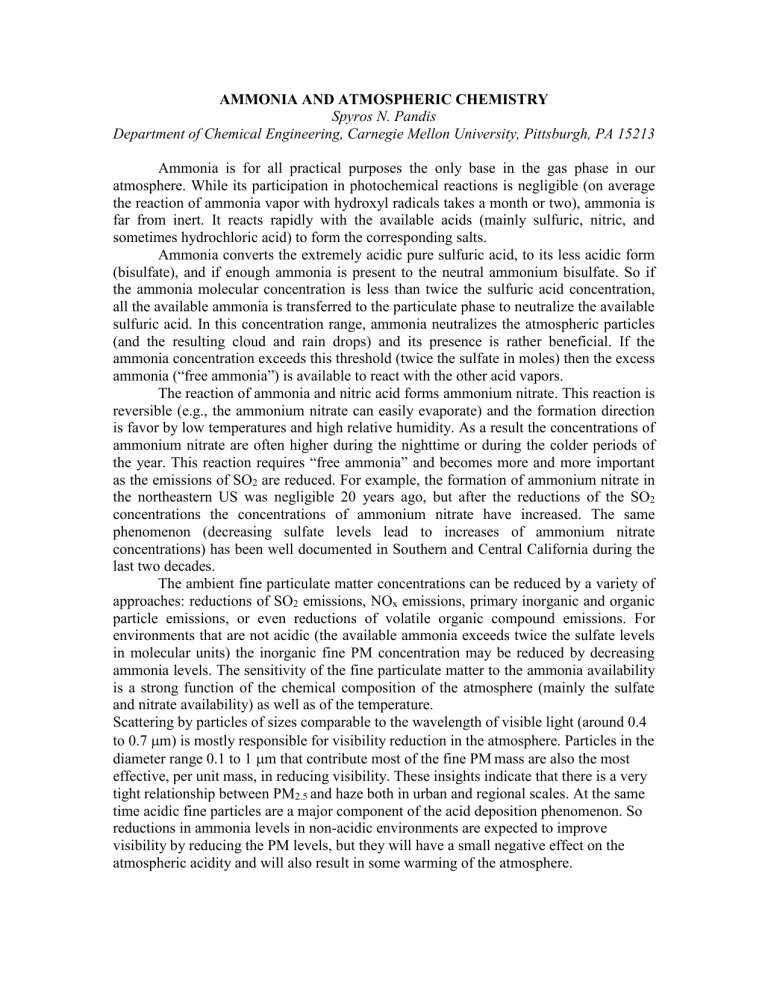
AMMONIA AND ATMOSPHERIC CHEMISTRY
Spyros N. Pandis
Department of Chemical Engineering, Carnegie Mellon University, Pittsburgh, PA 15213
Ammonia is for all practical purposes the only base in the gas phase in our atmosphere. While its participation in photochemical reactions is negligible (on average the reaction of ammonia vapor with hydroxyl radicals takes a month or two), ammonia is far from inert. It reacts rapidly with the available acids (mainly sulfuric, nitric, and sometimes hydrochloric acid) to form the corresponding salts.
Ammonia converts the extremely acidic pure sulfuric acid, to its less acidic form
(bisulfate), and if enough ammonia is present to the neutral ammonium bisulfate. So if the ammonia molecular concentration is less than twice the sulfuric acid concentration, all the available ammonia is transferred to the particulate phase to neutralize the available sulfuric acid. In this concentration range, ammonia neutralizes the atmospheric particles
(and the resulting cloud and rain drops) and its presence is rather beneficial. If the ammonia concentration exceeds this threshold (twice the sulfate in moles) then the excess ammonia (“free ammonia”) is available to react with the other acid vapors.
The reaction of ammonia and nitric acid forms ammonium nitrate. This reaction is reversible (e.g., the ammonium nitrate can easily evaporate) and the formation direction is favor by low temperatures and high relative humidity. As a result the concentrations of ammonium nitrate are often higher during the nighttime or during the colder periods of the year. This reaction requires “free ammonia” and becomes more and more important as the emissions of SO
2
are reduced. For example, the formation of ammonium nitrate in the northeastern US was negligible 20 years ago, but after the reductions of the SO
2 concentrations the concentrations of ammonium nitrate have increased. The same phenomenon (decreasing sulfate levels lead to increases of ammonium nitrate concentrations) has been well documented in Southern and Central California during the last two decades.
The ambient fine particulate matter concentrations can be reduced by a variety of approaches: reductions of SO
2
emissions, NO x
emissions, primary inorganic and organic particle emissions, or even reductions of volatile organic compound emissions. For environments that are not acidic (the available ammonia exceeds twice the sulfate levels in molecular units) the inorganic fine PM concentration may be reduced by decreasing ammonia levels. The sensitivity of the fine particulate matter to the ammonia availability is a strong function of the chemical composition of the atmosphere (mainly the sulfate and nitrate availability) as well as of the temperature.
Scattering by particles of sizes comparable to the wavelength of visible light (around 0.4 to 0.7
m) is mostly responsible for visibility reduction in the atmosphere. Particles in the diameter range 0.1 to 1
m that contribute most of the fine PM mass are also the most effective, per unit mass, in reducing visibility. These insights indicate that there is a very tight relationship between PM
2.5 and haze both in urban and regional scales. At the same time acidic fine particles are a major component of the acid deposition phenomenon. So reductions in ammonia levels in non-acidic environments are expected to improve visibility by reducing the PM levels, but they will have a small negative effect on the atmospheric acidity and will also result in some warming of the atmosphere.
Spyros Pandis, Elias Professor of Chemical Engineering and Engineering and Public
Policy, Chemical Engineering Department, Carnegie Mellon University, Doherty Hall
3107 Pittsburgh, PA 15213, Tel: 412-268-3531, Email: spyros+@andrew.cmu.edu
